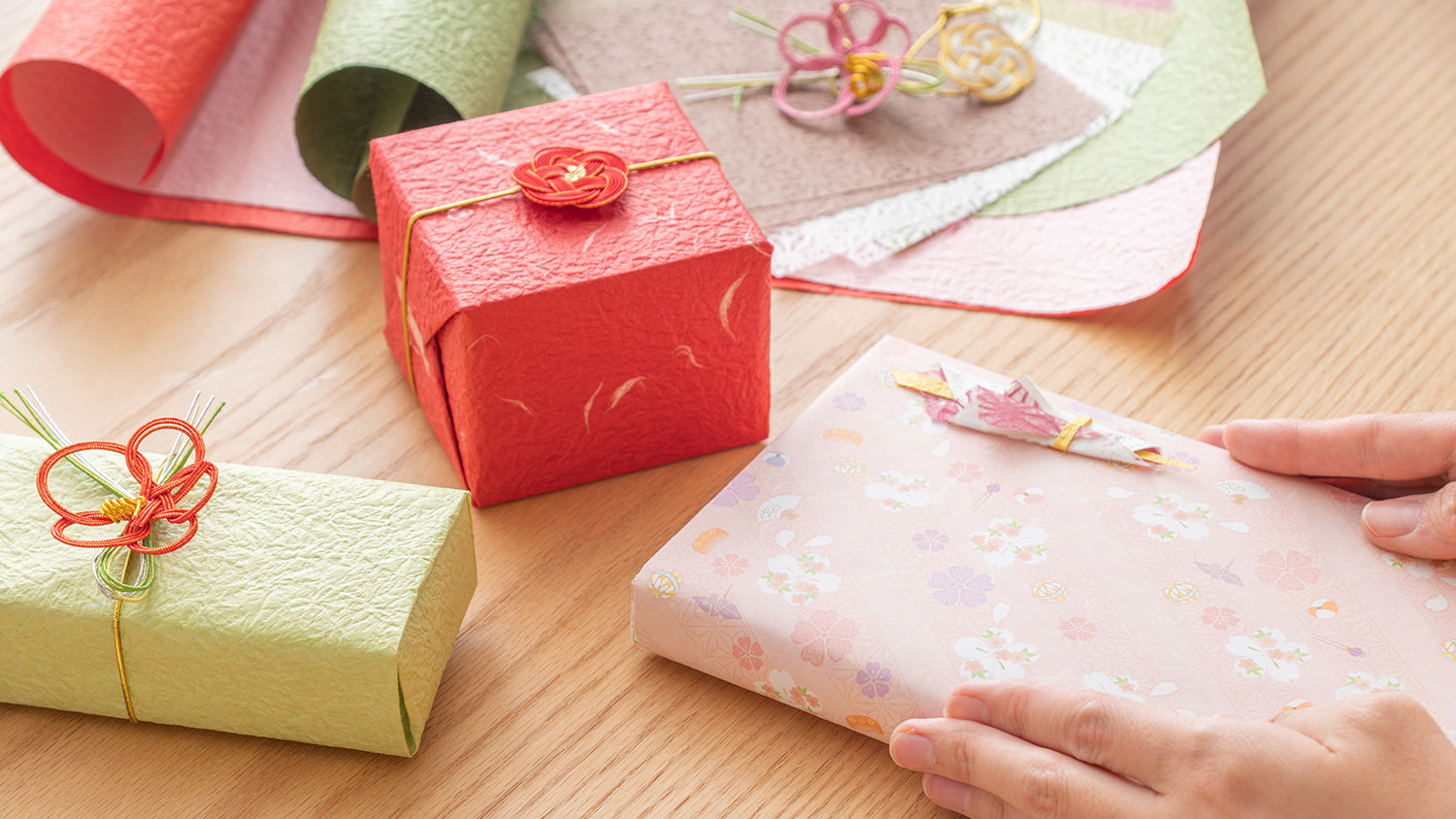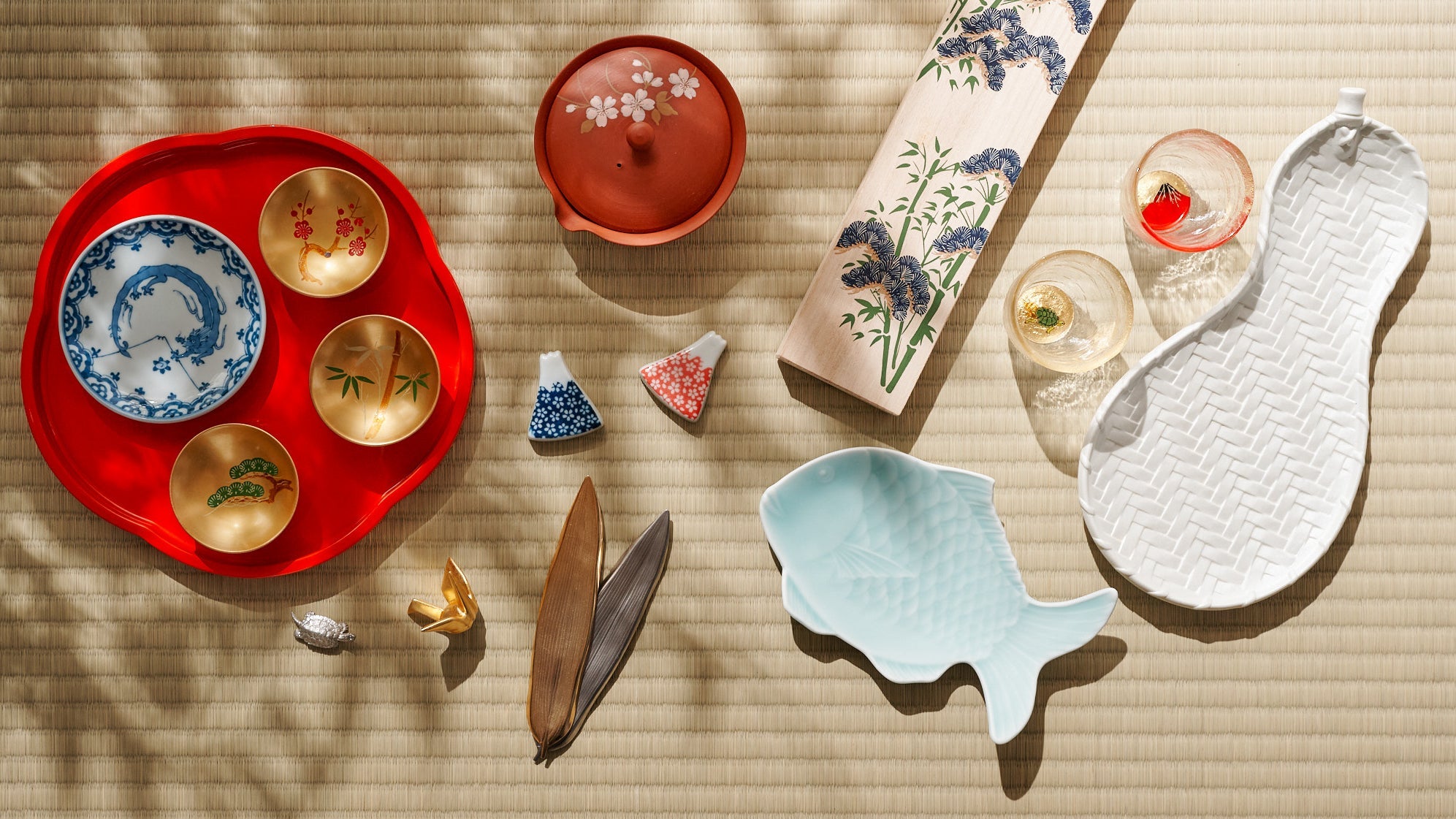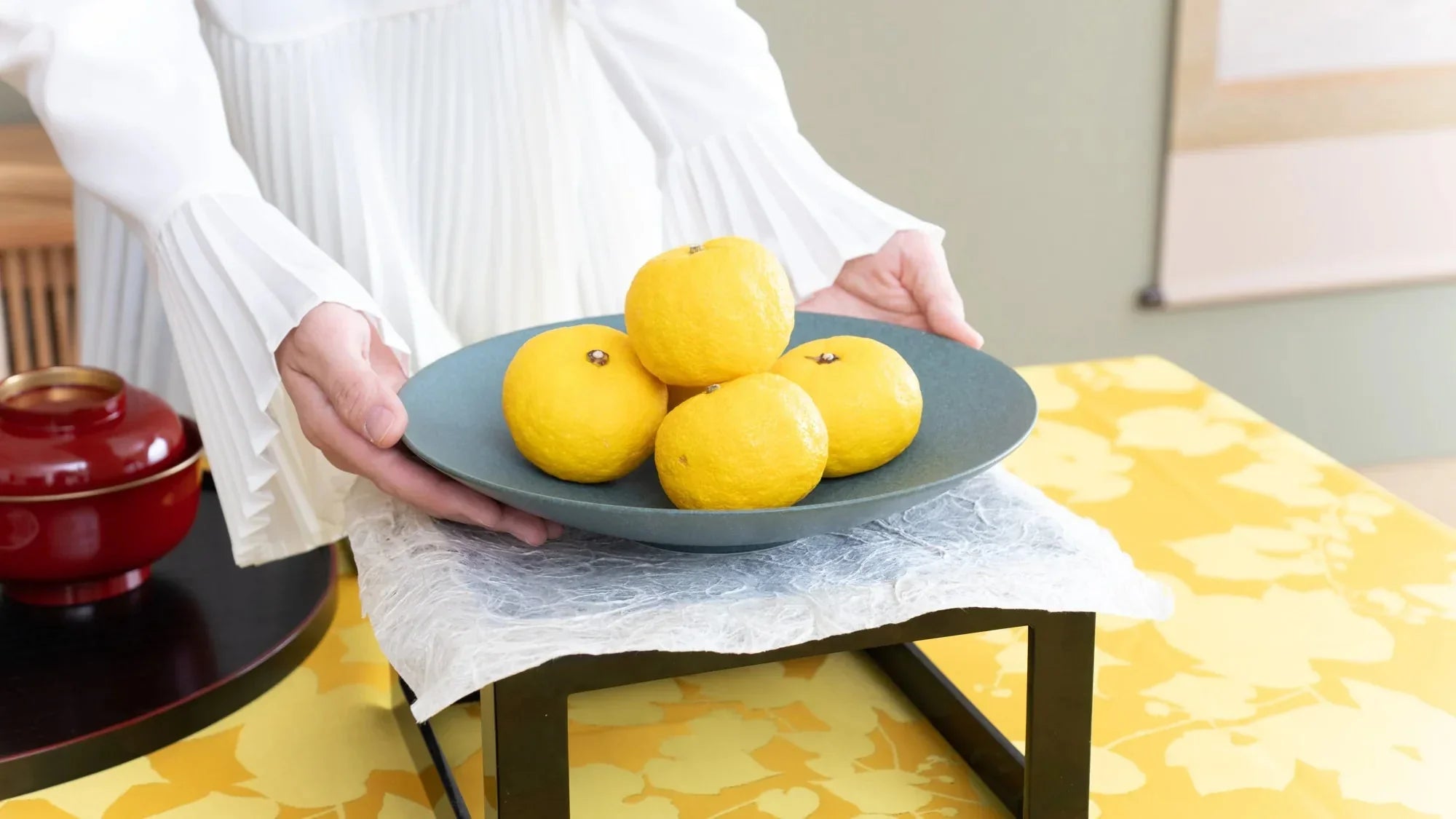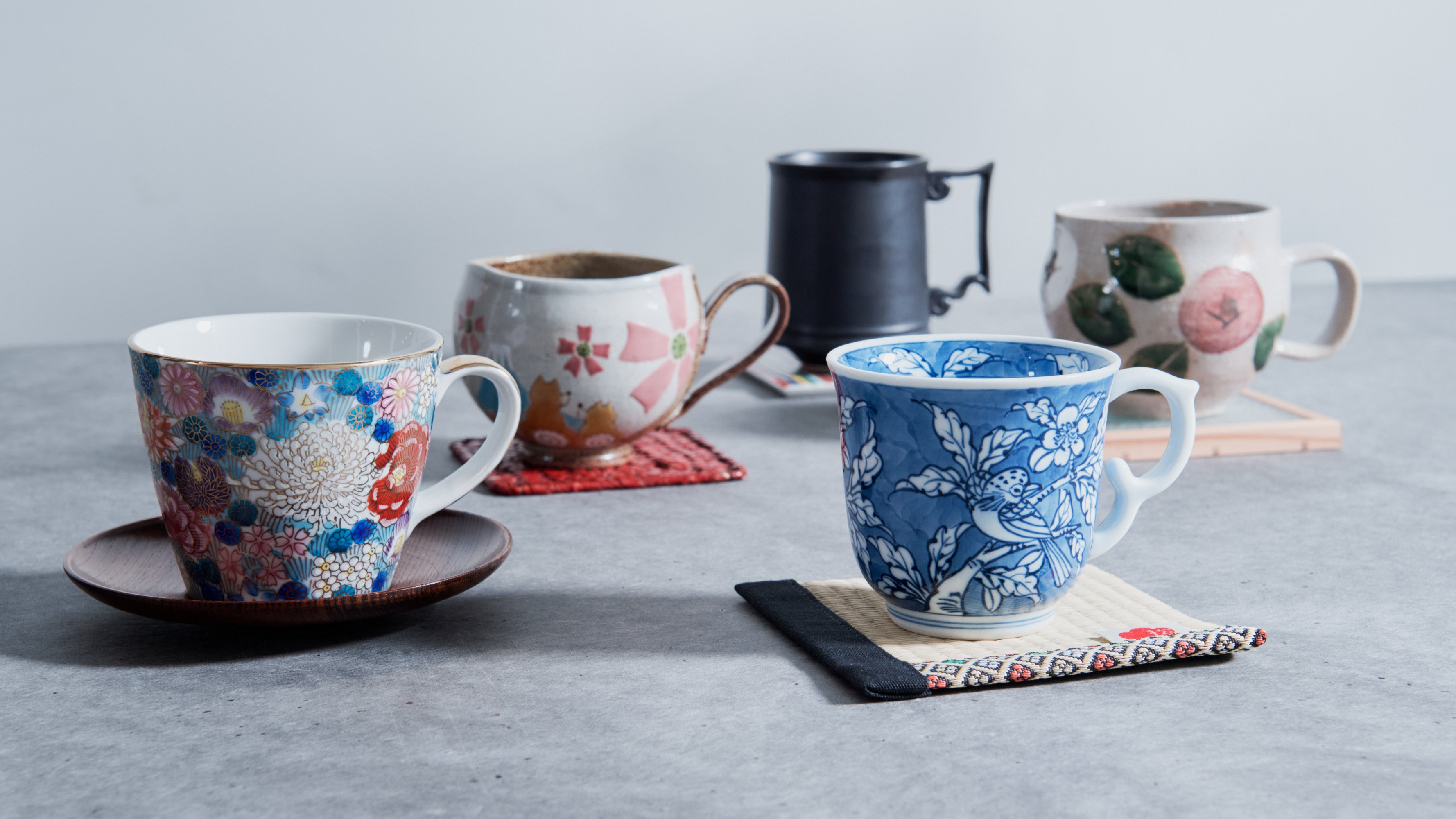
An Introduction to Japanese Ceramic Glazes
Written by Ito Ryo
Many Japanese ceramics are created by applying glaze to bisque ware—a molded, unglazed clay body that has been fired once at low temperature—and then firing a second time at high temperature.
Glaze, made by dissolving plant ash or minerals in water, vitrifies (converts into a glassy substance) when heated to high temperatures, forming a layered coating on the surface of the clay body. This dramatically enhances the practicality and allure of ceramics. In this sense, glaze can be seen as a kind of “costume” that potters drape over the bare skin of their vessels.
The world of glazes is profoundly deep, and fully understanding it is no easy task. But the more one deepens their knowledge of glazes, the more one’s understanding of ceramics themselves grows exponentially. Learning about glazes also makes the experience of selecting and using ceramics all the richer.
Table of contents
A Brief History of Pottery Glaze in Japan
The first appearance of glaze in Japan was in the fifth century. The earliest example is found on sueki, also known as Sue stoneware, clay vessels fired using techniques transmitted from the Korean Peninsula. However, these originating glazes were not intentionally created but rather accidental products, as components naturally contained in the clay body vitrified under high heat, or ashes from the fuel used in firing reacted chemically to create the glazes by chance.

Over time, techniques emerged to recreate that glassy layer that previously had only formed naturally on vessel surfaces. Between the twelfth and sixteenth centuries, various glazes were developed and flourished across Japan, centered on regions that were and continue today to be active centers of ceramic production, such as modern-day Seto City in Aichi Prefecture.
Initially, glazed ceramics were luxury items. But they gradually became more affordable and spread among the common people starting in the Edo period (1603–1868 CE), around the first half of the seventeenth century. This shift is said to have been driven by the dramatic increase in the production of Arita ware, porcelain made around present-day Arita City in Saga Prefecture.
The main roles of glaze include:
Decoration: Glaze adds luster, color, and patterns, broadening design possibilities.
Protection: Glaze shields the surface of ceramics from scratches and dirt, enhancing durability.
Waterproofing: Glaze reduces absorption of moisture into the ceramic surface, improving hygiene.
A crucial point to understand is that the development of glaze did not originally stem from a pursuit of functionality like protection or waterproofing but from a desire for decoration—the beauty that glaze brings forth. In other words, glaze and the beauty of ceramics are deeply, fundamentally connected.
Main Components of Glaze and Their Roles
Glaze consists of three basic components: silica, alkali substances, and metallic oxides. Let’s briefly outline what each does:
Silica: Silicon oxide obtained from quartz or feldspar. It vitrifies during firing, giving hardness and luster to the ceramic’s surface.
Alkalis: Include substances like sodium and potassium. They promote the melting of silica and help maintain the appropriate temperature for vitrification.
Metallic oxides: Act like pigments, diversifying glaze color. For example, copper oxide produces green or red hues; cobalt oxide yields vivid blue; and iron oxide creates brown or yellow tones.
While glazes are often industrially manufactured and sold by specialist companies, it is not uncommon for potters to make their own in pursuit of more ideal results.
Some ceramics are deliberately fired without glaze. In such cases (just as with ancient Sue stoneware), the alkali, lime, and other components in the ashes from burning firewood may react with silicic acid in the clay body to form a natural glassy coating. This is known as shizen-yu, or “natural (ash) glaze”. With results depending on firing conditions, natural ash glaze can produce a wide range of colors such as green, yellow, and brown. The end result is what one might call the beauty of chance.
Glazing Techniques
As previously mentioned, most ceramics are made by applying a glaze made up of a suspension of powdered glaze components in water to the surface of a bisque-fired clay body. The bisque firing, also known as biscuit firing or suyaki in Japanese, is conducted at around 800°C (1,472°F). After bisque firing and glazing come the main firing, or honyaki, at around 1,200°C (2,192°F).
The process of applying glaze to bisque-fired ceramics is called glazing or glaze application, and there are several methods:
Dipping:
Submerging the vessel in a container of glaze. Ensures even coating inside and out; thickness can be adjusted by varying the immersion time.

Pouring:
Pouring glaze over the vessel using a ladle. Requires skill for uniform application but allows for partial glazing and is also suitable for large pieces.

Spraying:
Applying glaze with a spray tool. Good for thin coatings on delicate pieces, partial glazing, or achieving special effects.

Brushing:
Applying glaze with a brush. Useful for applying multiple types of glaze or for detailed work, but brush marks may remain.

The chosen method has a significant impact on the vessel’s final appearance, reflecting each potter’s concept of beauty and individual aesthetic.
Furthermore, some metallic oxides in glaze change color depending on the firing atmosphere. The two main atmospheres are oxidation firing, carried out in the presence of ample oxygen, versus reduction firing, carried out in an oxygen-deficient environment. For example, iron oxide typically produces yellow to brown or black with oxidation firing, but bluish tones with reduction firing. Copper oxide produces a green color in oxidation firing and a red color in reduction firing.
The Beauty of Colors Created by Glaze
There are many types of glazes, classified in various ways, such as by component, texture, or firing temperature. Here we present one example of a classification based on color, a factor that deeply influences the beauty of ceramics:
Oribe glaze (green)
Made from plant ash and copper oxide. Named after Oribe ware, popularized starting in the seventeenth century in southern Gifu Prefecture. Trace iron content yields a pale yellow in complete combustion (oxidation firing) and a blue in incomplete combustion (reduction firing), adding subtle variations in the greens created by copper oxide.
Celadon glaze (blue)
Celadon glaze develops blue or green hues in reduction firing. These colors come from trace iron. Small amounts of iron result in a pale blue-white, such as that of blue-white porcelain, while almost no iron results in a transparent finish. A thicker glaze results in a deeper blue upon firing.
Shino glaze (white)
Used in Shino ware starting from the second half of the sixteenth century in southern Gifu and made solely from feldspar. Firing produces semi-translucent, milky-white surfaces with countless pinholes. The surface at the pinholes is tinged a distinctive scarlet due to iron in the clay body beneath the glaze, creating a two-tone contrast.
Iron glaze (brown, dark brown, black)
A mixture of plant ash and iron oxide. First used in Seto ware in the late thirteenth century, in what today is now northeastern Aichi prefecture. Iron glaze made up of 8–10 percent iron oxide yields kuro-yu, or “black glaze.” Removing black-glazed vessels from the kiln during firing and cooling them rapidly produces the glossy, jet-black finish known as Seto black.
Tenmoku glaze (black)
A type of iron glaze containing 8–10 percent iron oxide. Named after Tianmu Mountain (known as Tenmoku Mountain in Japanese) in Zhejiang Province, China, as a particular area of the mountain fired ceramics in shades of black. Used for tea bowls, variations arise from differences in iron amounts and crystallization. These include the iridescent yohen tenmoku, said to exhibit seven colors of light depending on differences in appearance of iron oxide crystals that rise to the surface, and yuteki tenmoku, whose spots resemble oil floating within water. Red or brown may also appear on a vessel’s lip, another defining characteristic.
Yellow Seto glaze (yellow)
Made of plant ash mixed with 1–3 percent ferric oxide. Developed in the late 16th century when potters from the Seto region in northeastern Aichi Prefecture moved to the southern part of the Mino area and created the technique. The yellow color comes from the ferric oxide and requires oxidation firing. Strong yellow tones and textured surfaces are highly valued.
Kohiki (white)
Technically a technique, not a glaze, and seen in Mino ware. It is said to be named after its finish, which looks as though white powder were sprinkled or blown over the ceramic’s surface. A red clay body is coated with white slip, then clear glaze (see note below) is applied over top. The result is a thick, soft white finish.
Note: Clear glaze:
Made from lime mixed with feldspar or pottery stone. Lime acts as a strong flux, meaning it promotes melting and fusion; feldspar or pottery stone helps with melting, adhesion, and vitrification.
Scenery Created by Glaze
In Japan, glazes that have been altered in appearance and expressive quality under the flames of the kiln are likened to landscapes and enjoyed as if it were natural scenery. Just like natural ash glaze, this “scenery,” created by chance, is valued for its individuality and as a merit in itself. Below are a couple of examples.
Crackle glaze (kannyu)
Also called crazing. Refers to a pattern of surface cracks that appear due to differences in shrinkage between glaze and clay body. When the fired vessel cools rapidly, the glaze contracts more than the body, creating the cracks.
Glaze dripping
Traces where glaze naturally flowed downward during firing, adding a sense of dynamic movement to the ceramic’s surface.
These landscapes often change subtly depending on the angle and type of light, or—for tableware—the food or beverages placed inside, revealing new charms each time.
Another delightful way to view these pieces is to consider the landscapes they resemble. Kannyu—complexly entwined wild mountain vines. Glaze drips—waterfall rivulets streaming down cliff faces. Each brings an enjoyable sense of the colorfully diverse scenery of the natural world.
Since the moment the people of antiquity instinctively perceived beauty in glazes accidentally created on fired surfaces, we have continued to pursue that glazed beauty into the present.
Seeking beauty even in everyday ceramics like tableware is a uniquely human endeavor, and freely appreciating this beauty is one of the joys of daily life available to all.
I am left in awe of the capabilities and roles of glaze that make this possible, and even as I complete this article, I cannot suppress my strong desire to learn even more.














Leave a comment
This site is protected by hCaptcha and the hCaptcha Privacy Policy and Terms of Service apply.